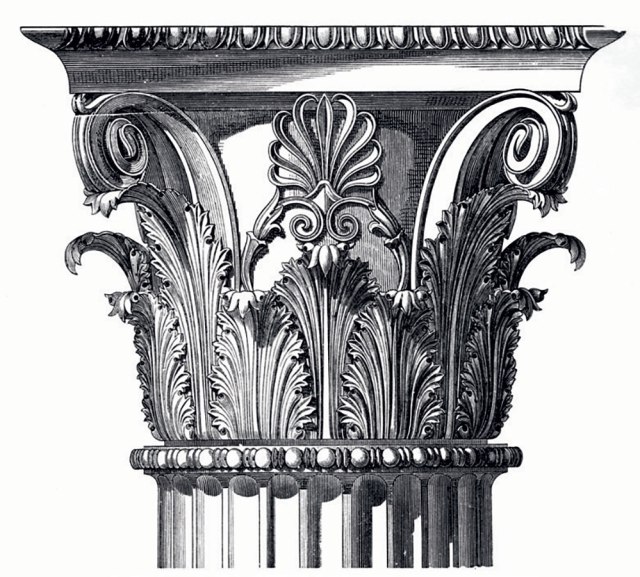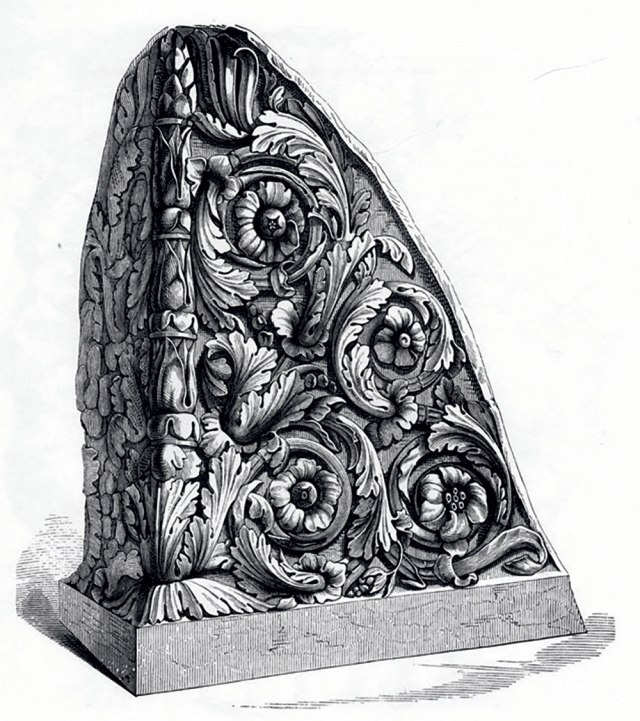
This is an excerpt from “Carving the Acanthus” by Mary May.
Walking through a historical journey of the acanthus leaf has its challenges, as the different art periods often overlap and the styles frequently migrate from country to country. There are numerous volumes written on the history of decorative arts, and this brief explanation is not intended to be an exhaustive historical account. Focusing on the acanthus leaf and its significance in architecture and furniture, we will follow the leaf as it evolves through each identifiable art period. At times, the design transition spans multiple years, and there are periods where this motif is nearly unrecognizable or almost disappears, only to regain in favor again in the following art period. There are certain art eras that I have omitted because of no evidence of acanthus leaf usage in their design. I hope this brief historical overview builds a curiosity and desire for further research and discovery.

THE EGYPTIANS (3200 BC TO 332 BC)
Ancient Egypt was not plentiful in trees, so the use of wood in furniture making was reserved strictly for the wealthy. Many of these pieces of furniture were well preserved in the low humidity of the Egyptian tombs. Native woods included acacia, sidder and fig, while ebony, cypress and cedar were imported from Syria and Lebanon. Ebony, ivory and bone were often combined with wood and overlaid with gold and silver. Lion paws, bull feet and goose and duck heads were carved into the legs of stools and armchairs. There is no evidence that acanthus leaves were a design element during this time in either furniture or architecture, but the lotus, papyrus and palm were common.

THE GREEKS: (1600 BC TO 100 BC)
The art of furniture making, which often included woodcarving, was highly valued in ancient Greece. Influenced by Egypt and the Orient, much of the early furniture was ornately decorated with marble, bronze, inlaid ivory, ebony and precious stones. Because wood is not as durable as stone, few remaining examples of woodcarvings from this period are available, and are mostly made of cedar, cypress, oak, maple, beech, citrus and willow. Even the famous Greek author Homer remarked that car penters were “welcomed the world over.” There are examples of the legs of some of the couches (“kline”) or chairs having carved animal legs and feet, with the backs shaped like a snake or horse head.
The first known example of the acanthus leaf as a decorative architectural element was in the Corinthian capital, originating in Greece in the 5th century BC. Based on the anthemion design popular in Greek architecture, the first carved acanthus leaves contained sharp points, deeply carved corners and sharp ridges between the lobes, creating clear shadow lines that were visible from a distance. Most examples of this early style of acanthus leaf are found as architectural stone carvings.

THE ROMANS (146 BC TO 337 AD)
After Greece came under Roman rule in 146 BC, the Greek decorative arts were eagerly absorbed by the new Roman Empire. Evidence of early Roman wood carvings show that arms and legs of chairs and couches were often carved to represent the limbs of animals, while chair backs and table supports were of carved griffins or winged lions. Common motifs used in architectural details are the anthemion, the scroll, the rosette, the acanthus, birds, cupids and reptiles. Woods used in carved furniture during this period were cedar, pine, elm, ash, beech, oak, box, olive, maple and pear.
The Roman period produced a richer, more flexible acanthus leaf, where the sharp points of the Greek style became softened. With its endless and varied possibilities, the acanthus leaf reflected the Roman love of art and beauty, and was incorporated into a wider range of decorative ornament. The details of the leaf contained deep “eyes,” which represented holes where the different lobes of the leaf overlap, and sharply defined ripples in the leaf, giving a dramatic feeling of movement. The leaf took on a more naturalistic feel, with the tip of the leaf often curling and twisting in a lifelike manner. From the Roman era on, there was scarce a time where the acanthus leaf was not a significant part of Italian ornamental design.
— MB